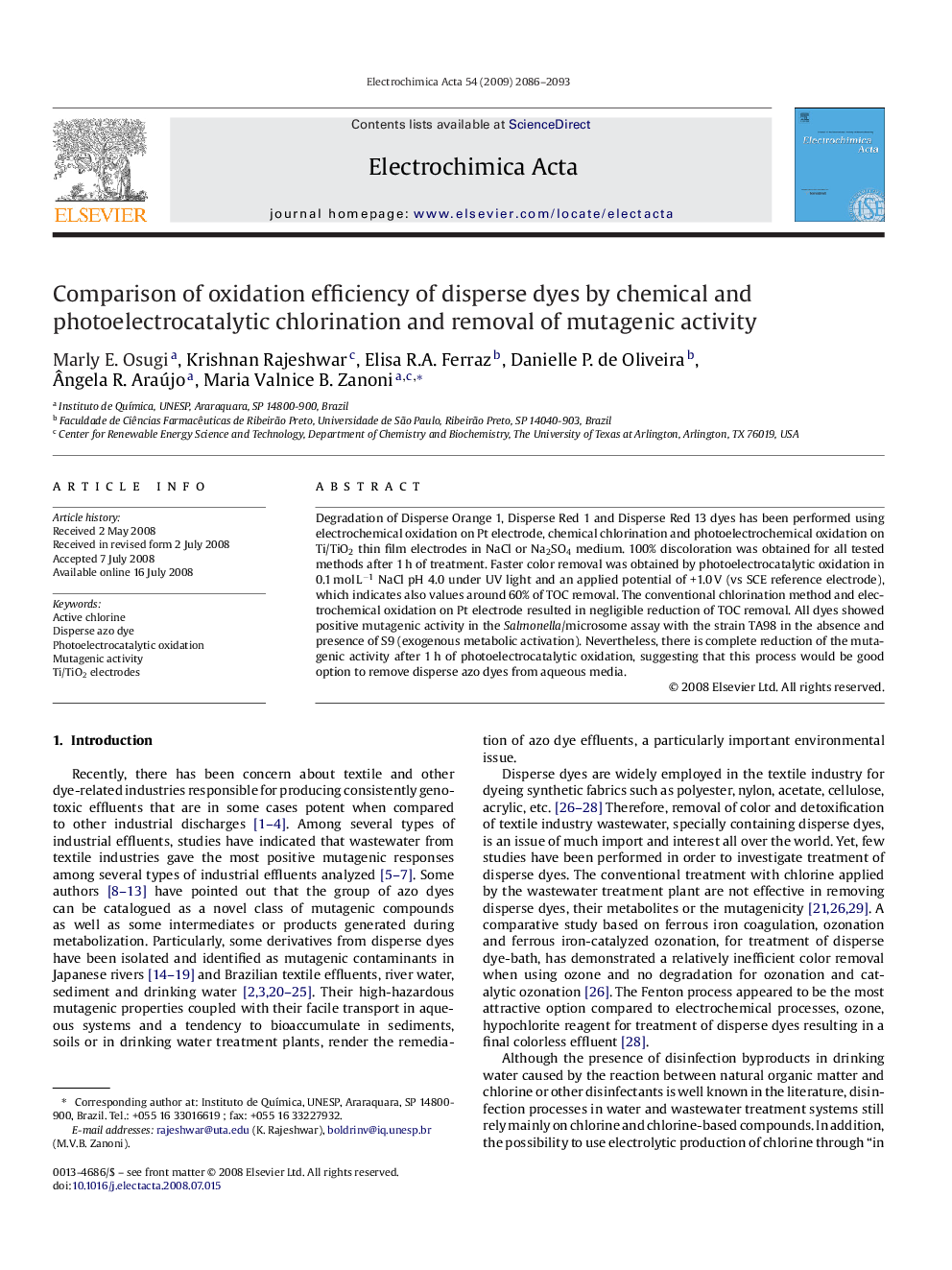| Article ID | Journal | Published Year | Pages | File Type |
|---|---|---|---|---|
| 193008 | Electrochimica Acta | 2009 | 8 Pages |
Degradation of Disperse Orange 1, Disperse Red 1 and Disperse Red 13 dyes has been performed using electrochemical oxidation on Pt electrode, chemical chlorination and photoelectrochemical oxidation on Ti/TiO2 thin film electrodes in NaCl or Na2SO4 medium. 100% discoloration was obtained for all tested methods after 1 h of treatment. Faster color removal was obtained by photoelectrocatalytic oxidation in 0.1 mol L−1 NaCl pH 4.0 under UV light and an applied potential of +1.0 V (vs SCE reference electrode), which indicates also values around 60% of TOC removal. The conventional chlorination method and electrochemical oxidation on Pt electrode resulted in negligible reduction of TOC removal. All dyes showed positive mutagenic activity in the Salmonella/microsome assay with the strain TA98 in the absence and presence of S9 (exogenous metabolic activation). Nevertheless, there is complete reduction of the mutagenic activity after 1 h of photoelectrocatalytic oxidation, suggesting that this process would be good option to remove disperse azo dyes from aqueous media.
